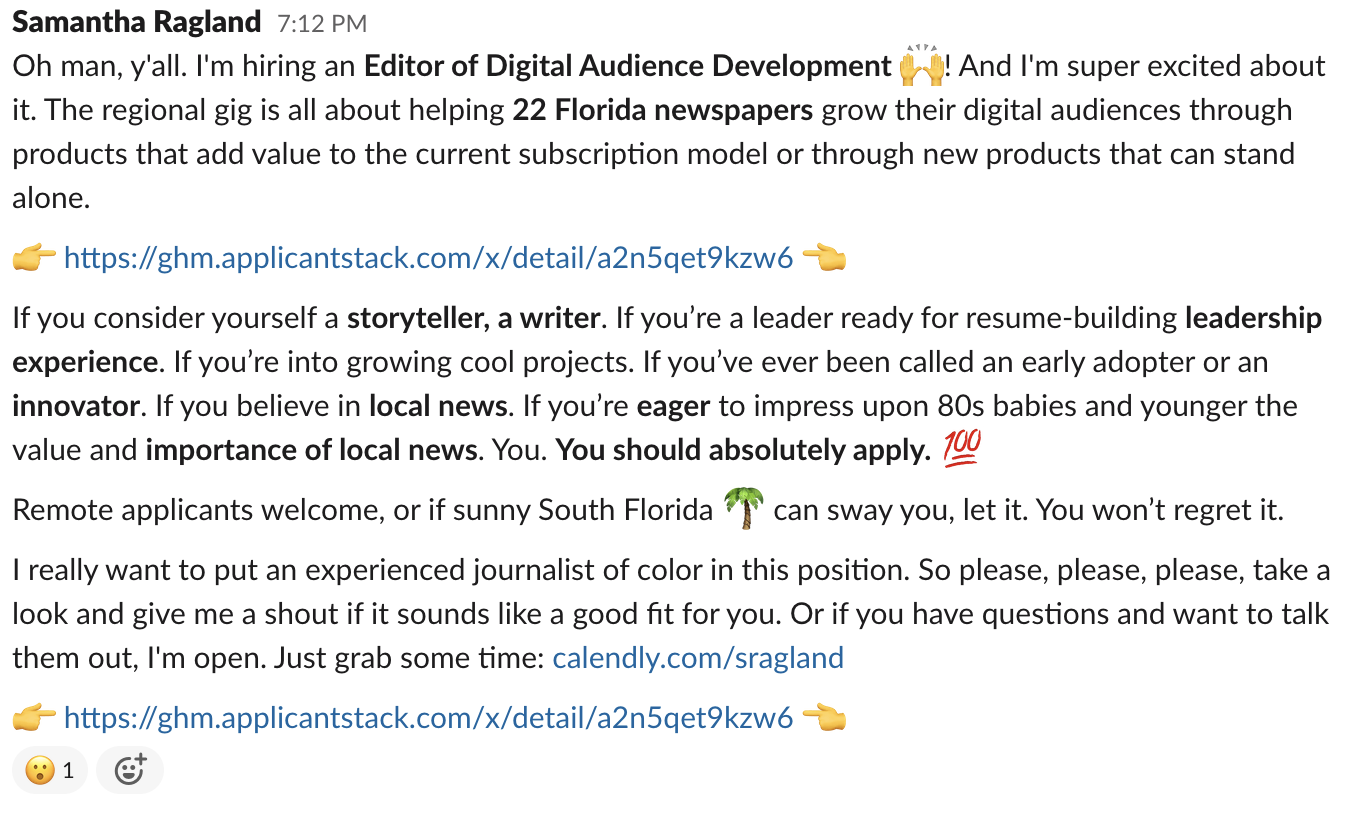
Hiring, retention, and promotion aren’t just jobs for people who make final decisions about which candidates to let in the door. Everyone in an organization can — and should — play a role in creating the team they want to work with.
Anyone, in any position, can influence who is hired and who succeeds. Here are some ways to turn recruitment upside down.
Hiring
Never underestimate the influence of the individual. As you move through your career, grow your network. This means ensuring that your encounters with people — industry conferences are great places to connect — are more than transactional.
Take the time to make an impression when you first meet someone and be sure to follow up afterward. Don’t discount someone based on their current title. Career paths change dramatically, and the peer you meet today could be the hiring manager you need to know next month.
If you’re in a position of influencing hires (regardless of whether openings currently exist): Always. Be. Recruiting. Don’t let the pipeline run dry. One way to accomplish this is by setting up alerts for bylines of people whose work you admire. Follow their social posts. Drop them a note to let them know that you’ve seen and admired their work.
Involving teams in the hiring process is a great way to develop internal skills and to bring a diversity of perspectives to whether the candidate is a good fit. Team members will likely elicit different responses from a candidate than a hiring manager might, and they can provide helpful context about the work environment.
Just be sure that every candidate for each opening talks with the same mix of people so you have the same baseline for comparison. Also take the time to interrogate whether what makes someone a good fit is their similarity to the existing team, or whether this candidate brings different life experiences and perspectives that will enrich your work.
Even if you’re not someone who weighs in on hiring decisions, you should take ownership of helping to recruit your next colleague. Spread job postings widely in your network, and also consider directly encouraging standout candidates to apply. This extra nudge is especially important for people of color and women, who often won’t apply even if they meet 100% of the job qualifications.
Test your comfort zone to find candidates. Turning to journalism associations is an excellent step, but don’t stop there. Look to influencers on YouTube, Snapchat, and other social media networks for someone who has skills that can be cultivated. Wade into journalism communities that are active on Slack. Think about writing a job posting that’s almost all emoji.

(Screenshot, Slack)
Retention
Now that someone has joined your organization, you can create a welcoming environment that sets them up for success. Some of this should have started during the hiring process. Did the newest addition to the team already meet everyone who works in the department? Is the team formally involved in onboarding? Besides human resources paperwork, it’s important to pass along institutional knowledge.
If your newest colleague adds diverse viewpoints to your organization, help them learn the culture rather than forcing them to assimilate. They should be comfortable bringing their whole self into the workplace instead of suppressing what makes them unique.
Is there someone who can help this person chart a career path and influence stakeholders along the way? Be sure to connect your new teammate.
And take a deep look at how people elevate others in the organization. Practice shine theory: If someone you work with looks good, you will also look good. And be sure to share power — especially in meetings.
Another way anyone at any level can help support colleagues is by sharing opportunities. Put someone else’s name up for a project so they can gain experience and recognition.
And be intentional about creating a feedback loop within your team. Empowering your team to share constructive, not destructive, feedback engages them and allows them to step into their own leadership capacity. It’s also a great way to share responsibility for story development from an audience member’s perspective. We should all be occupying both spaces, after all — that of a journalist and that of a content consumer. Use Slack SimplePoll, for example, to informally a/b test social teases, headlines, newsletter subject lines, etc.
Promotion
Think about how you can help people succeed from within the organization. If you understand how to navigate office politics, you can be instrumental to another person’s career advancement.
If you know that a hiring manager prefers a narrative one-sheet to an email, let the candidate know so they can set the right foot forward from the start. You can also help the hiring manager see the candidate as a whole person, especially if some of those qualities might not be evident from a resume.
Remember that success doesn’t necessarily mean steady progress toward a top decision-making role. For some people, success is being able to stay close to their work instead of moving into a managerial role. Take the time to have conversations about what someone finds fulfilling, and then do your best to help them achieve that in their daily work.
One other thing: Sometimes advancement means someone leaves for an opportunity elsewhere. Celebrate that success and continue to bring new talent to your organization.
Doris Truong is Poynter’s director of training and diversity. She can be reached at dtruong@poynter.org or on Twitter at @doristruong. Samantha Ragland is Poynter faculty. She can be reached at sragland@poynter.org or on Twitter at @sammyragland.
